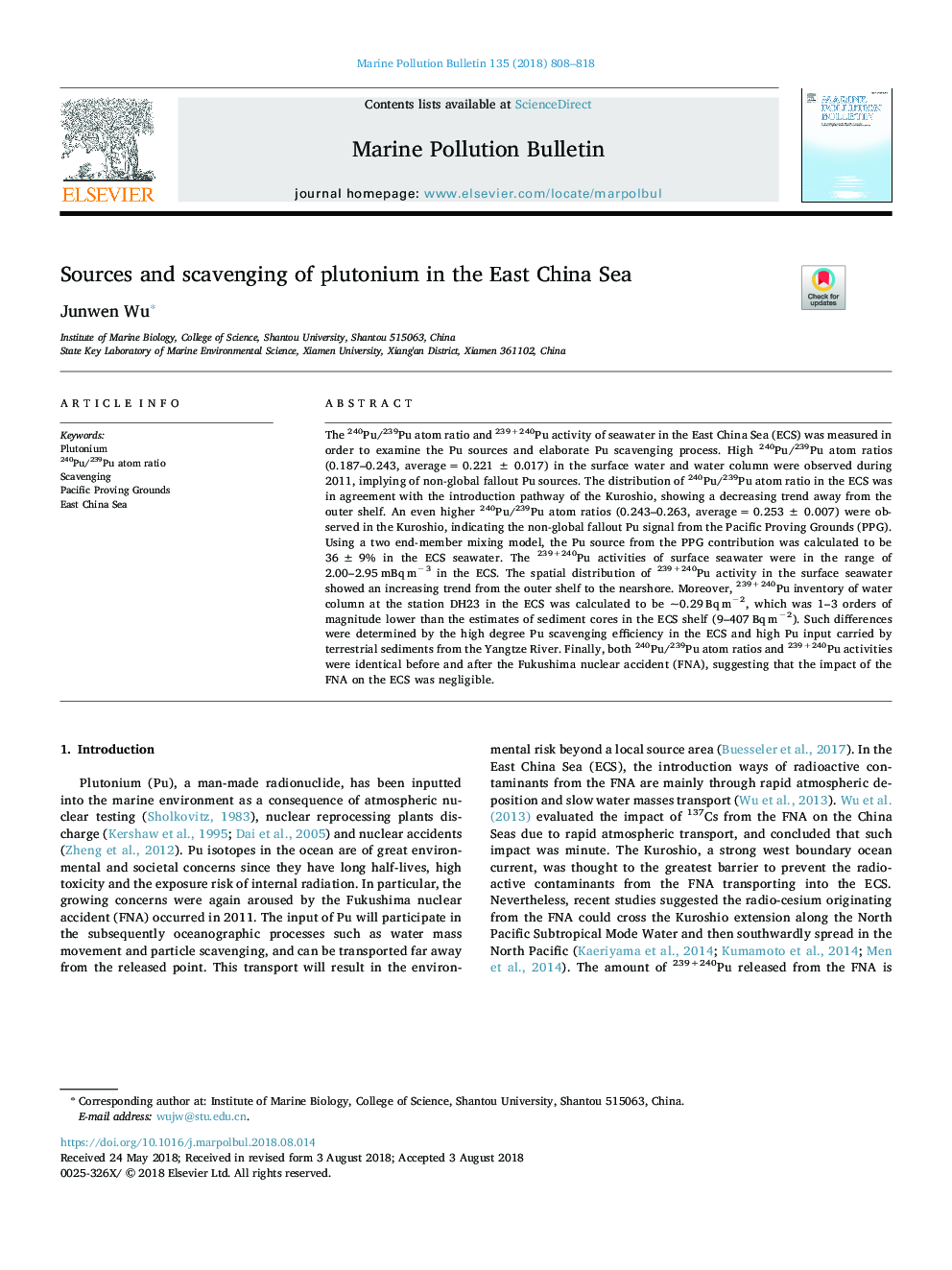| Article ID | Journal | Published Year | Pages | File Type |
|---|---|---|---|---|
| 8870784 | Marine Pollution Bulletin | 2018 | 11 Pages |
Abstract
The 240Pu/239Pu atom ratio and 239+240Pu activity of seawater in the East China Sea (ECS) was measured in order to examine the Pu sources and elaborate Pu scavenging process. High 240Pu/239Pu atom ratios (0.187-0.243, averageâ¯=â¯0.221â¯Â±â¯0.017) in the surface water and water column were observed during 2011, implying of non-global fallout Pu sources. The distribution of 240Pu/239Pu atom ratio in the ECS was in agreement with the introduction pathway of the Kuroshio, showing a decreasing trend away from the outer shelf. An even higher 240Pu/239Pu atom ratios (0.243-0.263, averageâ¯=â¯0.253â¯Â±â¯0.007) were observed in the Kuroshio, indicating the non-global fallout Pu signal from the Pacific Proving Grounds (PPG). Using a two end-member mixing model, the Pu source from the PPG contribution was calculated to be 36â¯Â±â¯9% in the ECS seawater. The 239+240Pu activities of surface seawater were in the range of 2.00-2.95â¯mBqâ¯mâ3 in the ECS. The spatial distribution of 239+240Pu activity in the surface seawater showed an increasing trend from the outer shelf to the nearshore. Moreover, 239+240Pu inventory of water column at the station DH23 in the ECS was calculated to be ~0.29â¯Bqâ¯mâ2, which was 1-3 orders of magnitude lower than the estimates of sediment cores in the ECS shelf (9-407â¯Bqâ¯mâ2). Such differences were determined by the high degree Pu scavenging efficiency in the ECS and high Pu input carried by terrestrial sediments from the Yangtze River. Finally, both 240Pu/239Pu atom ratios and 239+240Pu activities were identical before and after the Fukushima nuclear accident (FNA), suggesting that the impact of the FNA on the ECS was negligible.
Related Topics
Physical Sciences and Engineering
Earth and Planetary Sciences
Oceanography
Authors
Junwen Wu,
